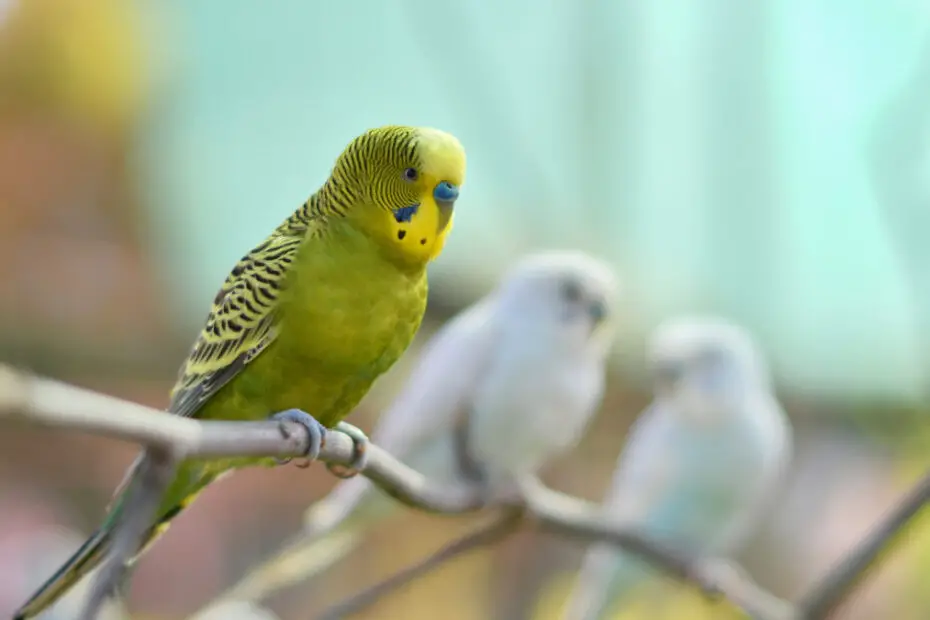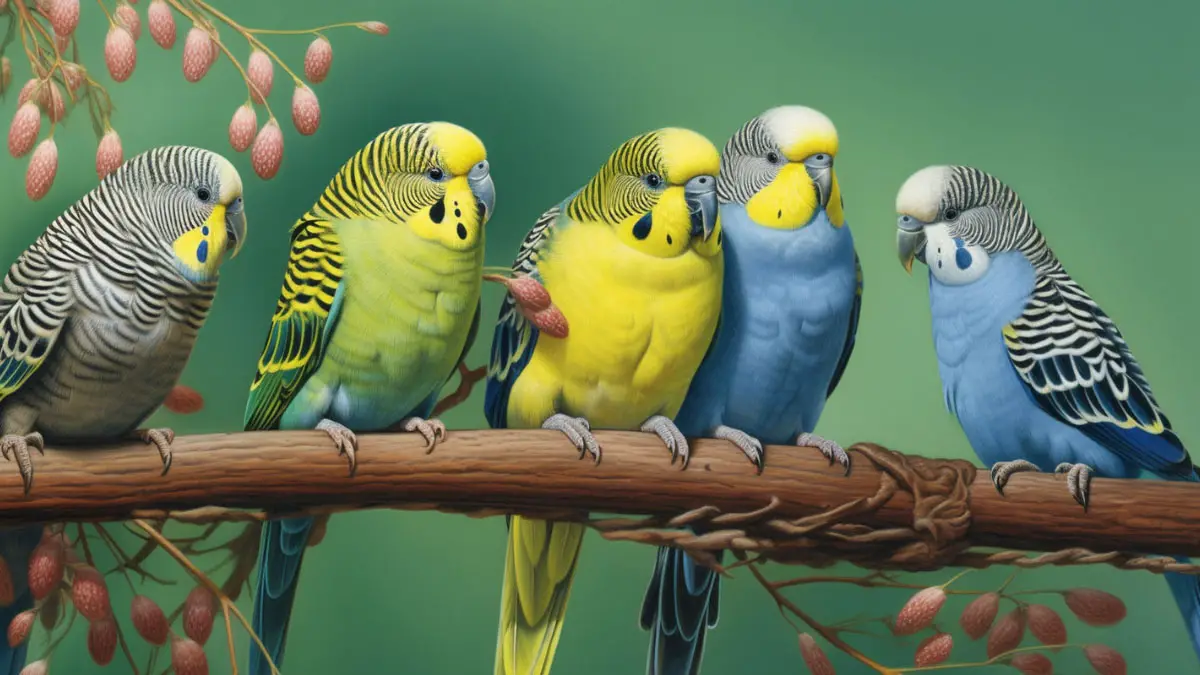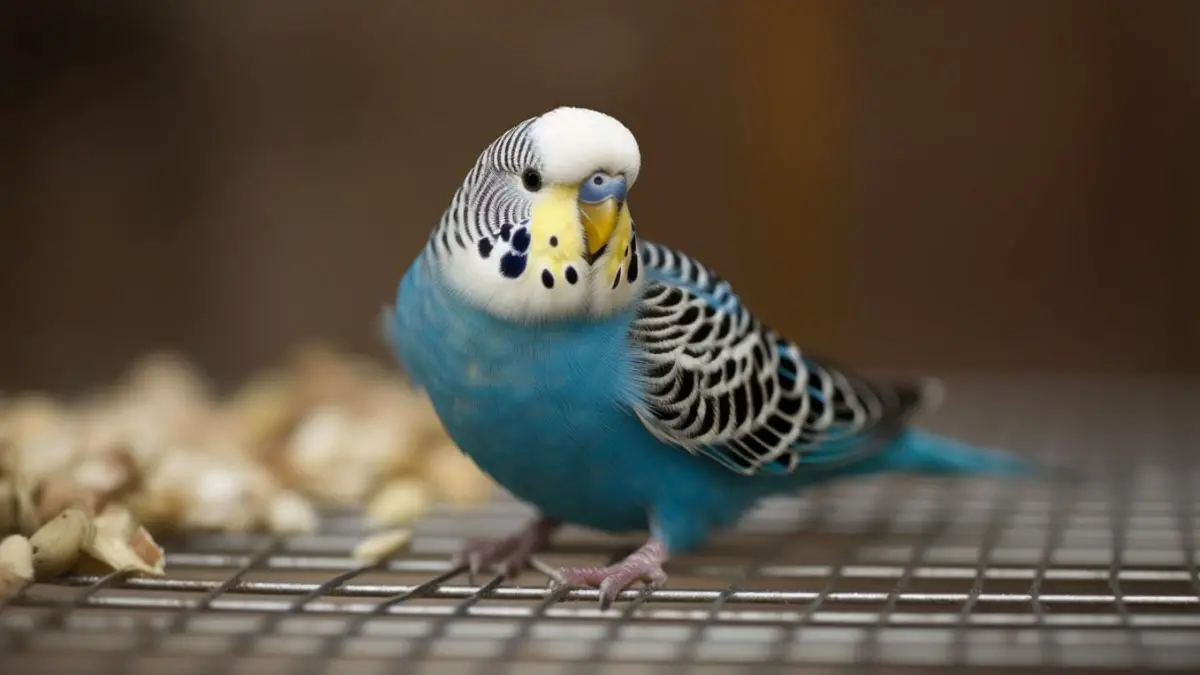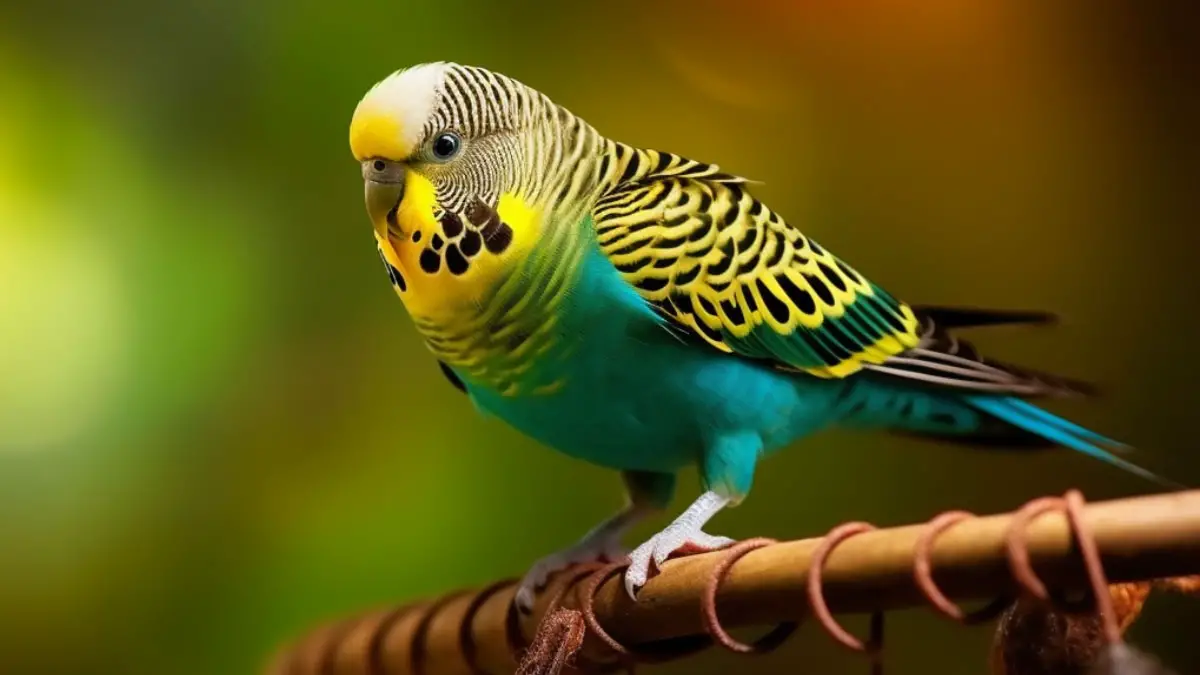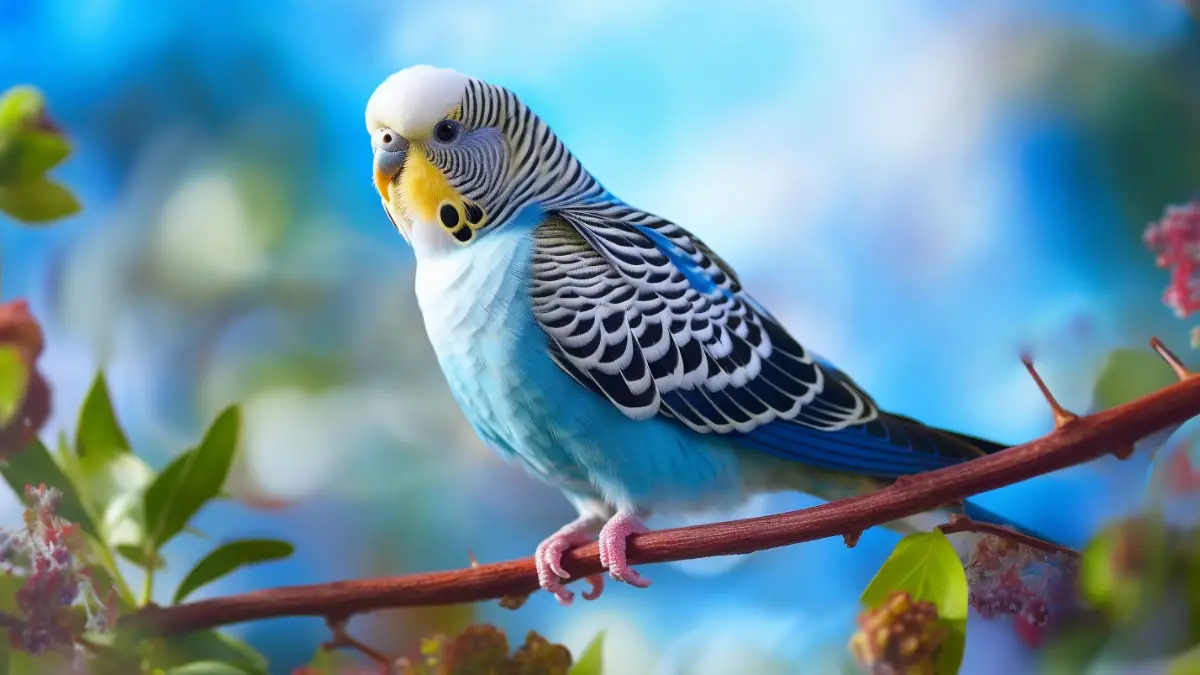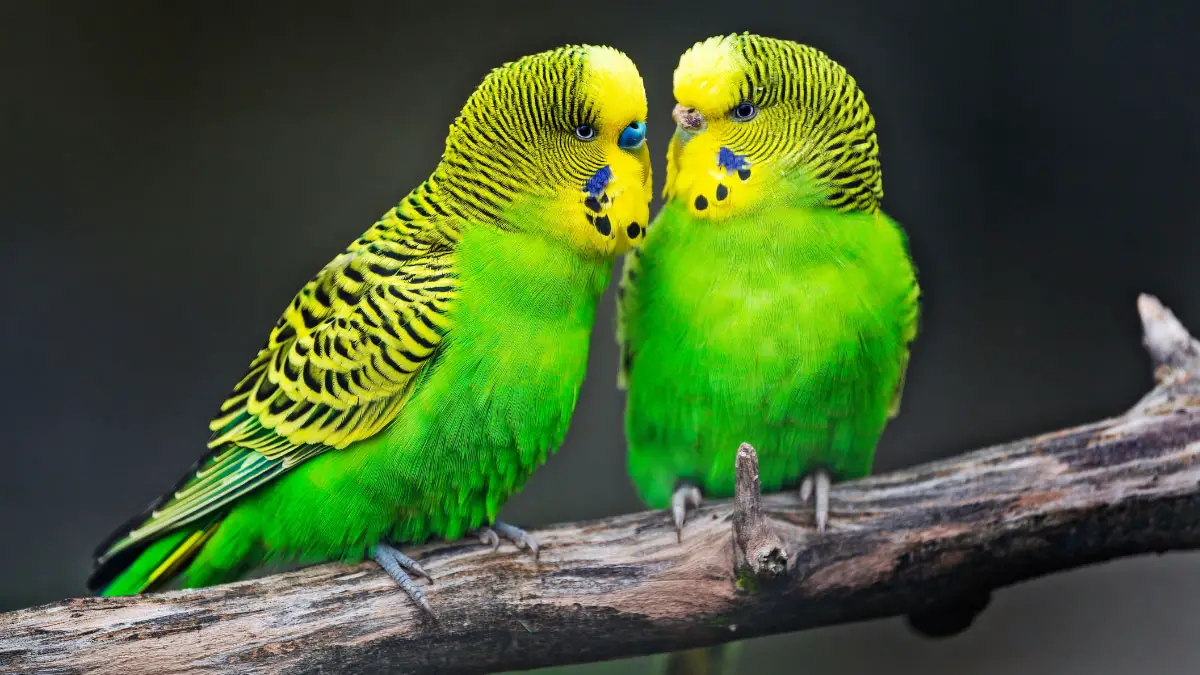Budgies, or parakeets, are among the most popular pet birds in the world. As a pet owner, it’s important to be aware of their unique health needs and be prepared to identify and treat any potential illnesses or health concerns that may arise. One such condition that affects these birds is bumblefoot, also known as pododermatitis.
But what causes it? How to treat? This disease is a bacterial infection that affects the footpad of birds. The condition can cause painful inflammation and swollen feet in budgies, leading to difficulty in perching, reduced activity, and even serious health complications if left untreated. There are three ways to treat this disease: Home care, medication and surgical intervention.
These birds are particularly susceptible to this infection due to their delicate feet, which can easily become injured or infected if not properly cared for. And understanding the causes, signs, and treatment options for this infection is crucial for any budgie owner or pet bird enthusiast.
Continue reading to have an in-depth overview of this disease in parakeets, including its definition, symptoms, and treatment options. This will also include preventive measures to keep your budgie’s feet healthy and answer some common questions about the condition.
Thus, this will help you have a comprehensive understanding of bumblefoot, allowing you to detect and treat the condition promptly and ensure your beloved pet bird’s ongoing health and well-being.
What is Bumblefoot in Budgies?
Bumblefoot is a condition that affects the feet of your birds. In budgies, this condition can be caused by various factors such as poor hygiene, improper perching, and poor diet, which weaken the immune system and make the bird more susceptible to infections.
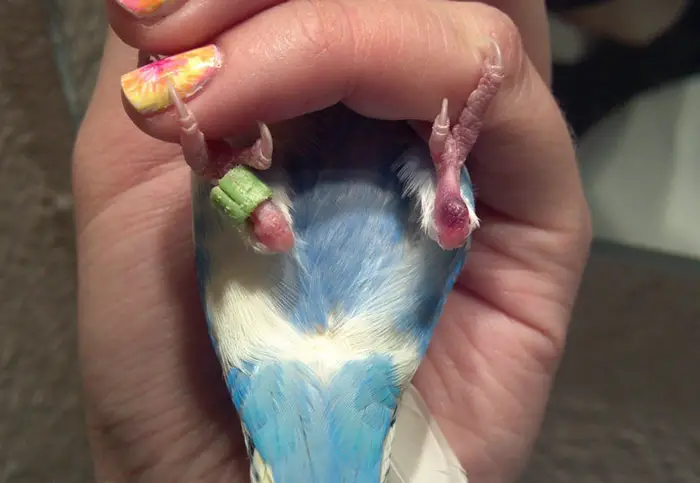
Causes of Bumblefoot in Budgies
The primary cause of this infection is the presence of the Staphylococcus bacteria, commonly found in the environment. This bacterium can infect the bird’s footpad when it is exposed to dirty or contaminated surfaces, leading to inflammation in budgies and the formation of a sore or ulcer.
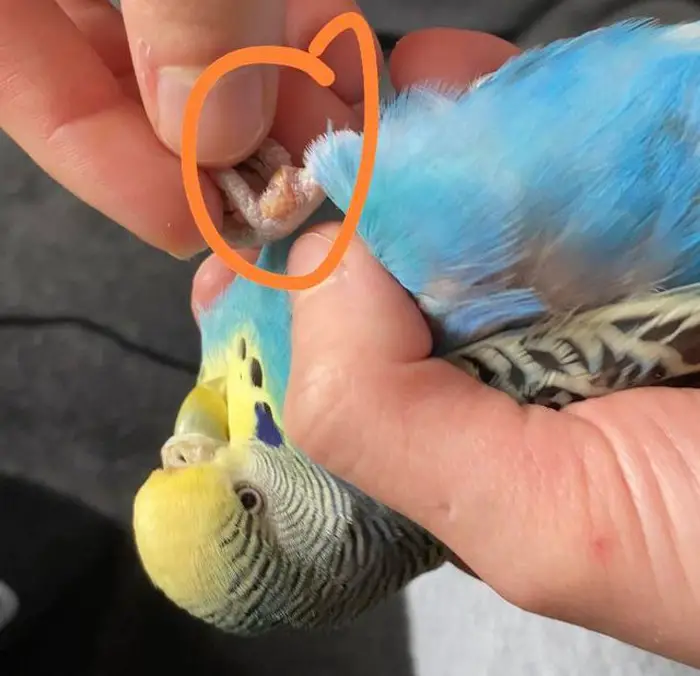
In addition to bacteria, other factors that can contribute to the development of this disease include:
- Trauma to the footpad from rough or inappropriate perching surfaces or sharp objects in the birdcage leads to foot infections in budgies.
- Lack of exercise and foot stimulation; can weaken the foot muscles and reduce circulation.
- Poor nutrition; can compromise the immune system and lead to slower healing.
- Excessive weight; can put extra pressure on the footpad and lead to inflammation.
Types of Bacteria that Cause Bumblefoot in Budgies
Staphylococcus bacteria (Staphylococcus aureus and Staphylococcus intermedius) are the most common type of bacteria that cause this infection. This bacterium can thrive in dirty or damp conditions, making birdcages an ideal breeding ground. Other types of bacteria that can cause this disease include the following:
- Streptococcus
- Pseudomonas
- Proteus
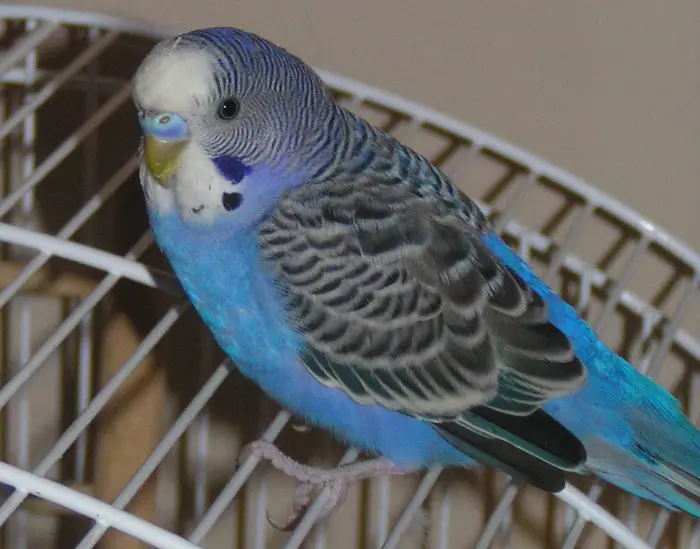
How Bumblefoot Affects the Feet of Budgies
This condition can affect one or both of a budgie’s feet and typically begins with inflammation of the footpad, leading to swelling, redness, and discomfort. As the infection progresses, the footpad can become sore and ulcerated, and a scab may form over the affected area.
In severe cases, the infection can spread to the bone and joints, causing severe pain and difficulty in walking. If left untreated, this infection can lead to long-term health complications, including chronic pain, deformity, and difficulty perching, which can impact a bird’s quality of life.
Symptoms of Bumblefoot in Budgies
Bumblefoot can cause a range of physical and behavioral symptoms in your pet bird. If you suspect that your budgie may have this disease, it is important to observe their behavior and examine their feet carefully for any signs of infection.
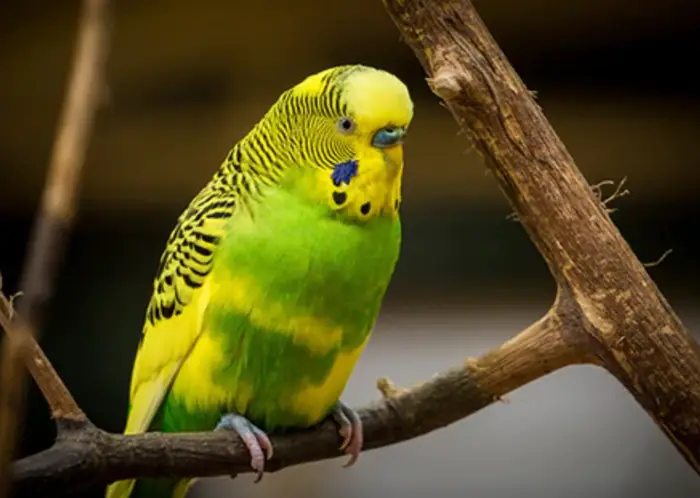
Physical Signs of Bumblefoot
There are several physical signs that you can notice in your budgie if it has this infection. They include the following:
- Scabs on feet: One of the most apparent signs of this disease is the development of scabs on the feet. These scabs are usually dark and circular in appearance.
- Redness: The affected area on foot may also appear reddish in color.
- Swelling: Swelling may also be observed around the scabbed area.
- Lameness: This disease can cause lameness in your bird, making it difficult for them to walk or perch. This can also result in an abnormal gait or posture.
- Thickening of skin: Over time, the skin around the affected area may thicken due to the buildup of scar tissue.
- Ulcers on soles of feet: In severe cases, your bird may develop ulcers on the soles of their feet.
Behavioral Changes in Budgies with Bumblefoot
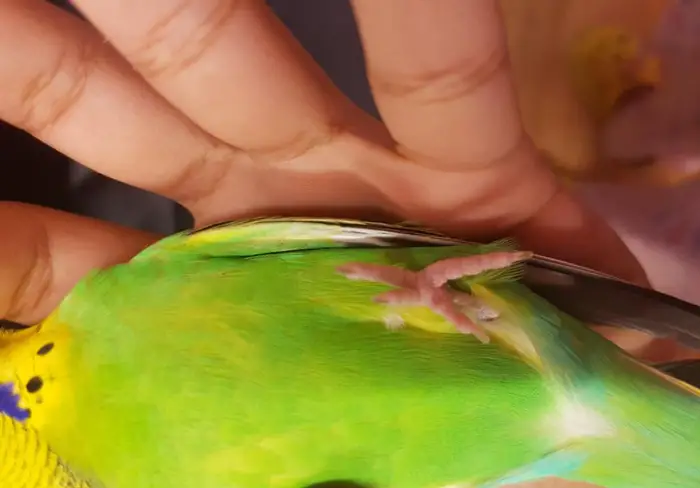
Budgies with this disease may exhibit a range of behavioral changes that are indicative of discomfort or pain. They include the following:
- Reluctance to perch: Affected birds may become reluctant to perch or move around their cage, instead preferring to sit on the bottom of the cage or on a flat surface.
- Reduced activity: This disease can cause your bird to become less active than usual, and they may spend more time sitting on their bird perches.
- Signs of being generally unwell: If your bird is infected, it may exhibit other signs, such as a loss of appetite or decreased grooming behavior.
If left untreated, this condition can cause serious health complications in your pet. For example, the infection can spread to other parts of the body, leading to a systemic infection that can be difficult to treat.
Additionally, the inflammation and pain associated with bumblefoot can cause your budgie to become increasingly stressed. This can weaken their immune system and make them more susceptible to other budgie diseases. In severe cases, this disease can permanently damage the footpad or even the loss of the affected foot, making it important to seek prompt healing at the first signs of infection.
Treatment of Bumblefoot in Budgies
This disease can lead to severe complications if left untreated. That is why early detection and care of this condition are crucial for a successful outcome. In severe cases, it can even be fatal. So, regularly monitoring the infected feet in budgies can help catch any signs of bumblefoot early.
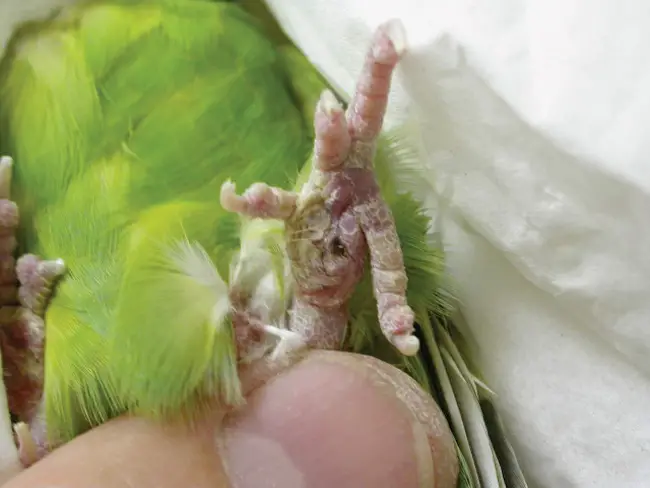
Treatment for this infection can be a multi-step process that involves both home care and veterinary intervention. Here is how to treat bumblefoot in budgies.
Step 1: Home remedies for bumblefoot in budgies
Basic home care is the first step in treating this disease by providing the necessary foot care in budgies. It includes keeping the affected foot clean and dry, providing soft and comfortable perches, and soaking the foot in warm Epsom salt water. This will help soften the scabs, reduce inflammation and pain, and promote healing.
You can use a clean, damp cloth or cotton swab dipped in warm water to clean the foot. Disinfect the foot using an antiseptic solution such as betadine or chlorhexidine. Make sure to dry the foot thoroughly after cleaning.
Step 2: Medications for bumblefoot
Depending on the severity of the infection, antibiotics, anti-inflammatory drugs, or both may be prescribed by a veterinarian. Antibiotics for budgies can help fight off bacterial infections in budgies, while anti-inflammatory drugs can reduce swelling and pain.
Step 3: Surgical intervention for severe cases of bumblefoot
In severe cases of this condition, surgical intervention may be necessary. The surgery involves removing the infected tissue and draining any abscesses. A veterinarian will perform the surgery while the budgie is under general anesthesia. After the surgery, the bird will need to be monitored closely and given medication to manage pain and prevent infection.
After treatment, the budgie’s feet will need to be monitored regularly for any signs of recurrence. They should also continue receiving soft and comfortable perches to avoid further damage to the feet.
Preventing Bumblefoot in Budgies
Knowing how to prevent bumblefoot in budgies plays a crucial role in minimizing the risk of this disease. By taking simple steps to maintain optimal foot health, you can prevent this painful condition from developing in your birds.
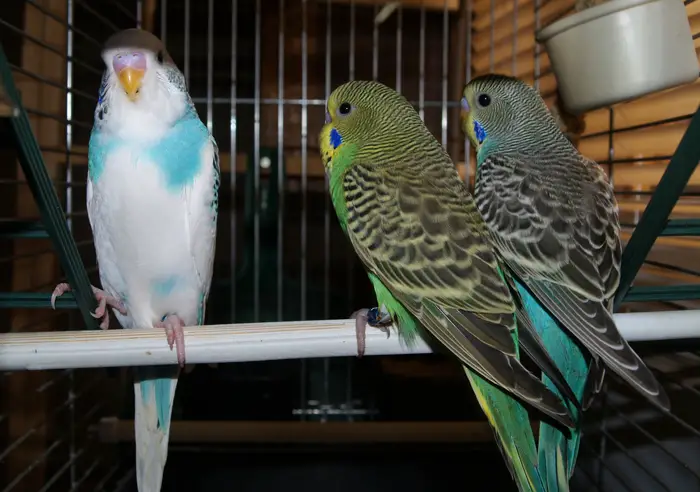
Preventive care is important because this infection can be difficult to treat, and in some cases, it can be fatal. By taking steps towards the prevention of bumblefoot, you can ensure your birds remain healthy and happy.
Tips for Maintaining Optimal Foot Health in Budgies
Here are a few tips to help you ensure that your budgies’ foot health remains optimal.
- Proper perching: It is important to provide a variety of perches for your budgie, including different sizes, textures, and materials. This can help prevent pressure on sore feet in budgies.
- Birdcage setup: The bird’s cage should be appropriately sized to allow the bird to move around and stretch its wings. In addition, the flooring should be made of a soft material that does not cause pressure sores or injuries to the feet.
- Foot exercise: Budgies need regular exercise to keep their feet and legs healthy. You can encourage your budgie to exercise by providing a range of bird toys, ladders, and swings.
Dietary Considerations for Preventing Bumblefoot
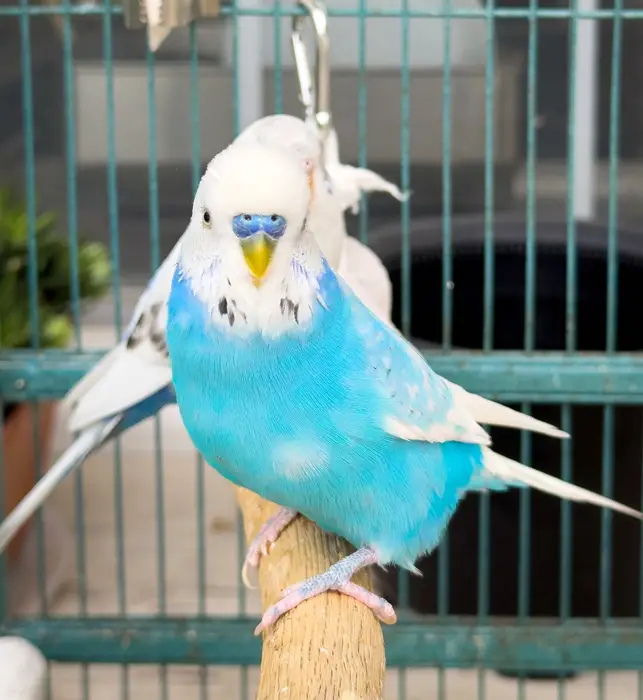
A well-balanced diet is essential for preventing this disease. Here are some dietary considerations to help prevent this infection:
- Provide a variety of fresh fruits and vegetables daily
- Offer high-quality seed mix and pellets
- Avoid over-replenishing high-fat or high-sugar treats in your bird feeding dishes
- Ensure access to clean water
- Hygiene practices for budgie owners to prevent the spread of bacteria that cause this disease
Good hygiene practices can also help prevent the spread of bacteria that cause this disease. Here are some tips for maintaining good hygiene:
- Clean the bird’s cage and perches regularly
- Disinfect the cage and perches with a bird-safe disinfectant regularly
- Wash your hands before and after handling your bird
- Do not allow your bird to come into contact with other birds or animals that may be carrying bacteria
FAQs
Here are a few additional questions you might be interested in.
Yes, with early detection and care, this infection can be cured. However, the success of treatment largely depends on the severity of the infection and how early it is detected. In severe cases, surgical intervention may be required, but with prompt and appropriate care, most cases of bumblefoot can be resolved.
The healing time for this disease depends on the severity of the infection and the healing method used. In mild cases where home care and antibiotics are prescribed, the bird can take several weeks to heal completely. In more severe cases where surgery is required, the healing time may be longer, and the bird may require additional post-surgical care.
Bumblefoot itself is not contagious, but the bacteria that cause it can be. It is important to practice good hygiene to prevent the spread of bacteria that can lead to this infection and to keep the bird’s living area clean and disinfected.
Yes, budgies can get this infection from dirty perches. Bacteria thrive in damp, dirty environments, and perches that are not cleaned and disinfected regularly can harbor bacteria that can infect a bird’s feet.
Proper perching, bird cage setup, foot exercise, a balanced diet, and good hygiene can help prevent this condition in budgies.
Conclusion
Bumblefoot is a common budgie health problem that can cause serious health complications if left untreated. Understanding the causes and symptoms of bumblefoot in budgies, including the care options for this infection, can help you detect and treat the disease promptly.
Further research on budgie foot health is necessary to identify new preventive measures and care options. Budgie owners can access a wealth of resources, including veterinary clinics, online forums, and support groups, to learn more about these birds’ conditions and other foot conditions.
Besides, by practicing preventive care and management, budgie owners can help maintain their bird’s foot health and prevent bumblefoot from occurring. Regular monitoring of their bird’s foot health and seeking prompt care for this infection is crucial for the well-being of these pet birds.
